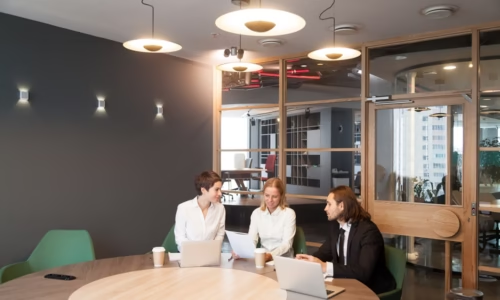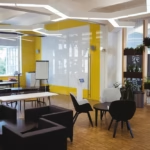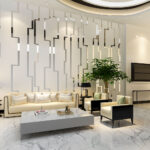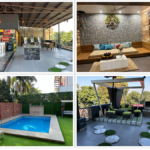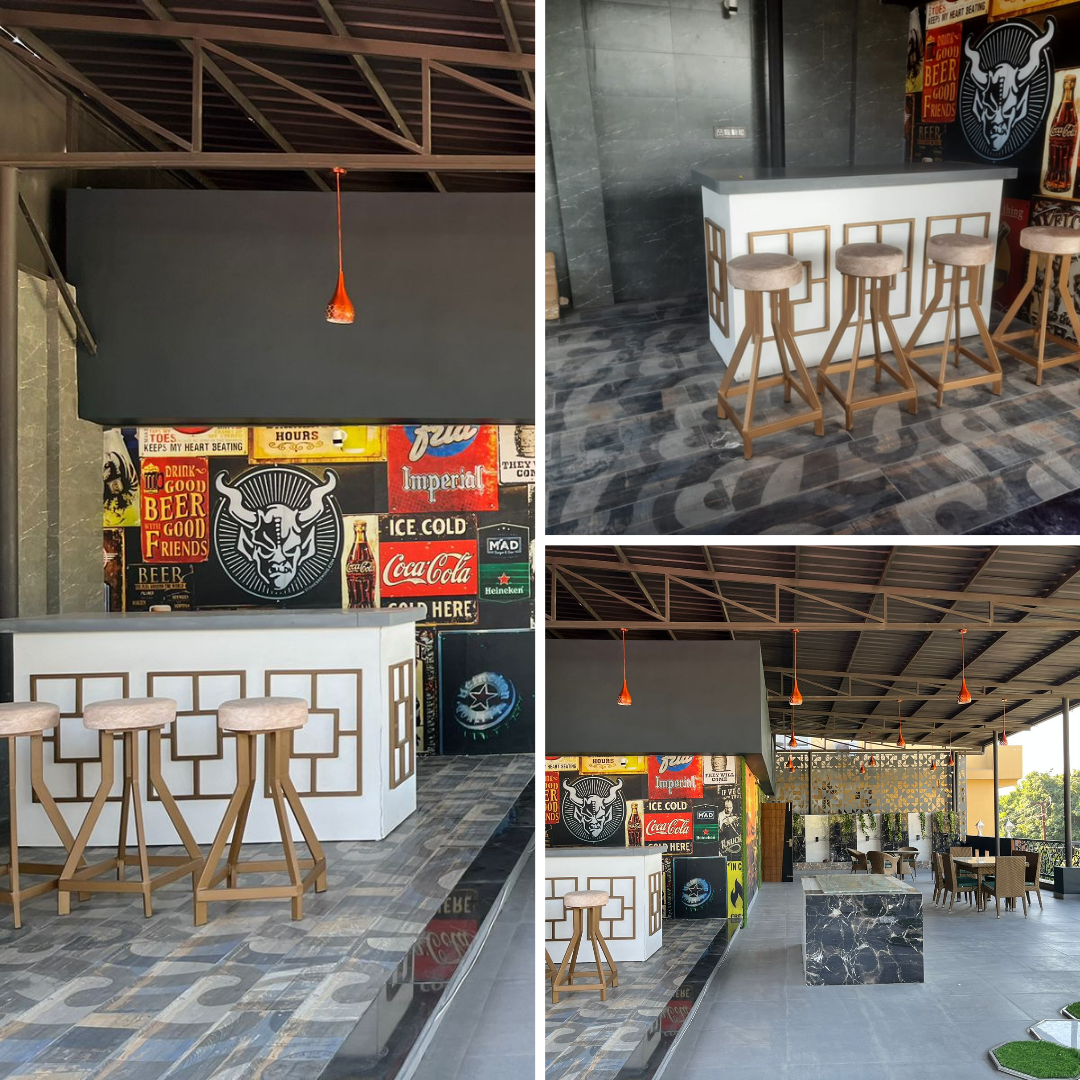The Psychology of Office Space: How Design Affects Mood
- amodini
- 0 Comments
When we think about office design, the first things that come to mind are desks, chairs, lighting, and maybe the color of the walls. But office space is much more than just furniture and paint. The design of an office has a deep connection with the psychology of employees. It can affect their mood, energy, productivity, creativity, and even overall health.
In today’s world, where many people spend more than eight hours a day at work, it is important to understand how the workplace environment influences emotions and behavior. This blog will explain in simple words how office design affects mood and why it matters for both employees and businesses.
Why Office Space Design Matters
The human mind responds strongly to its surroundings. Just like a messy room at home can make you feel stressed, or a clean and bright space can make you feel happy, the same happens in the workplace.
Employees spend most of their waking hours in the office, and the environment shapes their motivation and mental state. A well-designed office can reduce stress, increase focus, and make people feel more comfortable. On the other hand, a poorly designed office can lead to fatigue, frustration, and even burnout.
Key Elements of Office Design That Affect Mood
1. Lighting
Lighting plays one of the biggest roles in shaping mood. Natural light has been shown to improve focus, reduce eye strain, and even regulate sleep patterns. Employees working near windows often report higher job satisfaction.
Poor artificial lighting, on the other hand, can make people feel tired, stressed, or disconnected. Bright fluorescent lights may cause headaches, while dim lighting may reduce alertness.
Tip: Offices should maximize natural light wherever possible and use warm, adjustable artificial lights to create a balanced environment.
2. Colors
Colors affect emotions in powerful ways. Psychologists have studied color psychology for years, and offices can use this to their advantage.
-
Blue: Calming, improves focus, reduces stress.
-
Green: Refreshing, promotes balance, linked to creativity.
-
Yellow: Energetic, uplifting, but too much can cause anxiety.
-
Red: Stimulating, but too strong for long-term focus.
-
Neutral colors (white, gray, beige): Clean and professional, but overuse can feel dull.
A mix of calming and energizing colors helps create a balanced mood in the office.
3. Furniture and Ergonomics
Sitting at an uncomfortable desk or chair for long hours affects not only the body but also the mind. Bad posture and body pain can lead to frustration and low productivity.
Ergonomic furniture – like adjustable chairs, standing desks, and proper screen placement – helps employees stay comfortable. When people are physically comfortable, they feel mentally more positive and focused.
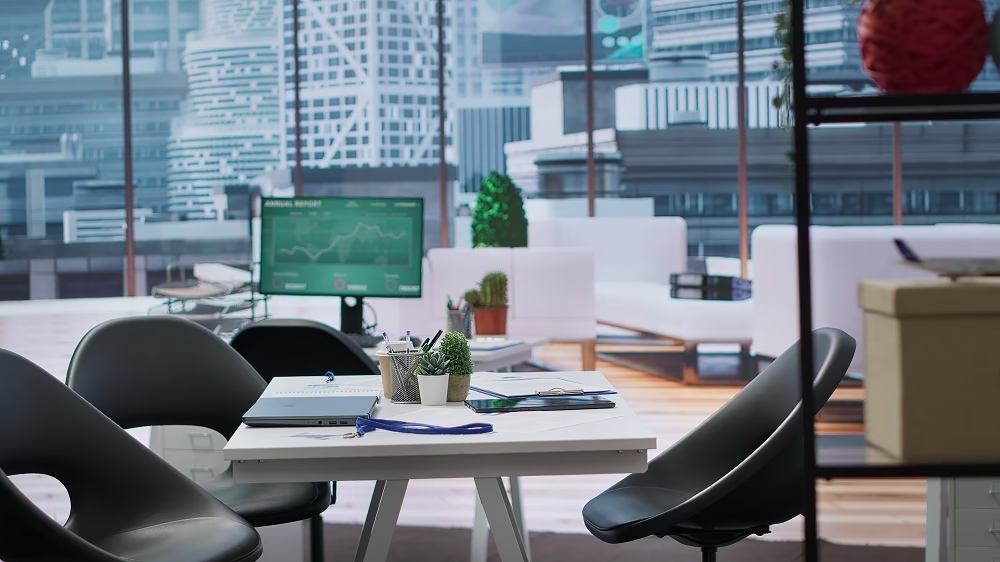
4. Space Layout
The way desks and rooms are arranged has a direct effect on mood and teamwork.
-
Open spaces: Encourage collaboration and communication, but can also cause noise and distractions.
-
Private spaces: Allow focus and reduce stress, but too much isolation can lead to loneliness.
The best offices offer a balance – open spaces for teamwork and private corners for quiet work.
5. Noise and Acoustics
Noise is one of the biggest causes of stress at work. Constant phone calls, chatter, or machine sounds can disturb concentration.
Good office design uses acoustic panels, quiet zones, or sound-absorbing furniture to reduce noise levels. Providing employees with headphones or designated quiet areas also helps.
6. Biophilic Design (Nature in the Office)
Bringing nature into the office has a strong positive impact on mood. Plants, flowers, or even pictures of natural landscapes can reduce stress and make people feel happier.
Studies show that employees working around greenery are more creative, focused, and relaxed. Biophilic design also improves air quality and overall well-being.
7. Break Areas and Relaxation Spaces
No one can work for eight hours straight without a mental break. A good office provides relaxing spaces like break rooms, lounges, or even small quiet zones.
These areas allow employees to recharge their energy, socialize, or just relax for a few minutes. Having comfortable break areas reduces stress and improves overall job satisfaction.
8. Temperature and Air Quality
Temperature and fresh air also affect mood and concentration. A room that is too hot can make people feel sleepy, while a cold space may cause discomfort. Similarly, poor air quality leads to headaches and fatigue.
Good ventilation systems, air purifiers, and balanced temperatures create a healthier and happier environment.
The Connection Between Design and Productivity
A positive mood directly improves productivity. When employees feel comfortable, safe, and valued in their workspace, they are more motivated to perform well.
Here are some ways office design boosts productivity:
-
Reduces stress and absenteeism.
-
Improves concentration and problem-solving.
-
Encourages teamwork and communication.
-
Enhances creativity and innovation.
In contrast, a poorly designed office increases frustration, mistakes, and even employee turnover.
The Role of Personalization
Allowing employees to personalize their workspace – like adding family photos, small plants, or personal decorations – gives them a sense of ownership. This makes them feel more connected and happy in the office.
Personal touches also make the space feel warmer and less mechanical. Even small gestures, like letting employees choose their desk setup, improve morale.
Remote Work and Home Office Design
Since many people now work from home, the psychology of office space also applies to home offices. A cluttered corner with bad lighting can make remote workers feel stressed and unmotivated.
Simple changes – like choosing a quiet spot, using natural light, adding plants, and investing in an ergonomic chair – can greatly improve mood and productivity at home too.
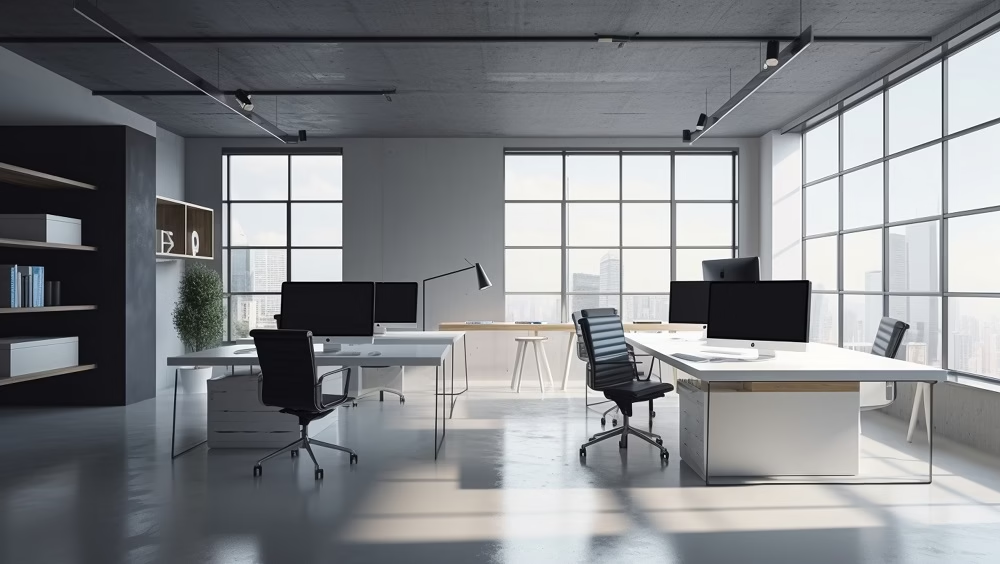
Businesses That Get It Right
Big companies like Google, Apple, and Microsoft have long invested in creative office designs. Their workspaces include open areas, colorful walls, nap pods, green spaces, and innovative furniture. These companies understand that employee happiness leads to better results.
But even small businesses can improve their offices without spending too much. Adding plants, adjusting lighting, or rearranging desks can make a huge difference.
Conclusion
The psychology of office space is not just about decoration – it is about creating an environment where employees feel comfortable, motivated, and happy. From lighting and colors to layout and nature, every element plays a role in shaping mood.
A well-designed office reduces stress, improves focus, and boosts productivity. Whether it’s a large company office or a small home workspace, the design choices we make influence how we think and feel every day.


